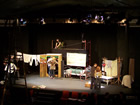Are fruit flies getting to your fruit bowl before you are ......... then overtaking your home??? Most commonly, the answer yes. The fruit fly population is especially bothersome with above normal seasonal rainfall. There are many methods to control or to eliminate the fruit fly in your home and these easy steps will direct you to the easiest and most effective one without witnessing the second and third generations as they grow from infants to adults.
The life cycle of the fruit fly is only 10 days and these little flies could be better named "nuisance flies".
HERE IS THE SECRET
- Remove all fresh fruit from your beautiful fruit bowl
- Store all fruit in the refrigerator
- Build the trap!!!!
- Fill a glass jar 1/3 full with vinegar ( do not fuss about using expensive vinegar)
- Add a wee squirt of dish soap
- Add a quick burst of water from tap (to create a lot of bubbles)
- Drizzle a wee bit of red wine over top (just as extra bait)
The vinegar (and wine of course) attracts them, the dish soap creates the bubbles and the bubbles are the actual trap. Throughout the day quickly stir the mixture to keep a nice head of bubbles on top. Within seconds the flies will be drawn to the glass, get trapped in the bubbles and you will have one-by-one less flies to trouble you.
4. Place stoppers in all of the sink drains. This is a common nesting place - possibly due to
the dampness. I even leave a little water lying in the sink and catch a few unsuspecting
flies there daily.
5. It is not clear to me where else they nest, beside the sink drains, but I do continually
spray my cupboards down with ammonia (or Windex) and wipe them with paper toweling.
I am obsessed with the flies being inside my home and am often found spraying the flies
with ammonia, which does not kill them - but it stuns them, they drop like flies which
allows me to squish them with paper towelling. This is a very slow method of control and
a bit disgusting.
with ammonia, which does not kill them - but it stuns them, they drop like flies which
allows me to squish them with paper towelling. This is a very slow method of control and
a bit disgusting.
6. Keep doors tightly closed to prevent them from entering from outdoors and ensure that
the windows are well screened. Wipe exterior door casings with ammonia to deter them
from hanging around and waiting for the door to be opened.
the windows are well screened. Wipe exterior door casings with ammonia to deter them
from hanging around and waiting for the door to be opened.
7. Remove all empty soda and beer cans from the house as well as any empty wine bottles.
8. A gift of fresh flowers in the home is not necessarily a good gift when it also comes into
your home with a family or two of fruit flies nestled in the petals of the flowers.
9. Move the green recycle bin as far from the doors as possible. They love the green bin
and for good reason, as yummy stuff is always in there.
9. Move the green recycle bin as far from the doors as possible. They love the green bin
and for good reason, as yummy stuff is always in there.
Do not keep freshly cut flowers in the home as they attract flies and create a nesting spot for them.
DO NOT BE DISHEARTENED WHEN YOU OBSERVE THE NEXT GENERATION OVERTAKING YOUR HOME. FOR EVERY FLY THAT IS CAPTURED IN THE TRAP THAT IS ONE LESS THAT IS PROCREATING AND EVENTUALLY THE NUMBERS WILL DECREASE.












